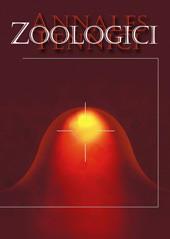Range expansion of ectoparasites can cause parasites to attack new host species. In these cases it is important for the parasite to be able to adapt to the new environment and to reproduce on the host. For the host, it is crucial to hinder successfully the development of long-lasting parasitic relationship. The deer ked (Lipoptena cervi) is a novel ectoparasite for northern cervids. We investigated if the deer ked can use the reindeer (Rangifer tarandus) as a host and, if it can, whether antiparasitic treatment against this parasite would be available. Three groups of reindeer were monitored: two groups of 6 reindeer were infected with 300 flies per each individual; a control group comprised 6 animals. One of the infected groups was treated with subcutaneous ivermectin. At the end of the experiment the infestation rate of the infected animals was low. The reindeer in the non-treated group had both live and dead deer keds and also a single pupa while the ivermectin-treated reindeer had only dead deer keds. As some deer keds survived and reproduced, the deer ked can potentially use the reindeer as a host but antiparasitic treatment may be effective against this parasite.
How to translate text using browser tools
1 March 2010
Threat of An Invasive Parasitic Fly, the Deer Ked (Lipoptena cervi), to the Reindeer (Rangifer Tarandus Tarandus): Experimental Infection and Treatment
Sanna-Mari Kynkäänniemi,
Raine Kortet,
Laura Härkönen,
Arja Kaitala,
Tommi Paakkonen,
Anne-Mari Mustonen,
Petteri Nieminen,
Sauli Härkönen,
Hannu Ylönen,
Sauli Laaksonen
ACCESS THE FULL ARTICLE

Annales Zoologici Fennici
Vol. 47 • No. 1
March 2010
Vol. 47 • No. 1
March 2010




